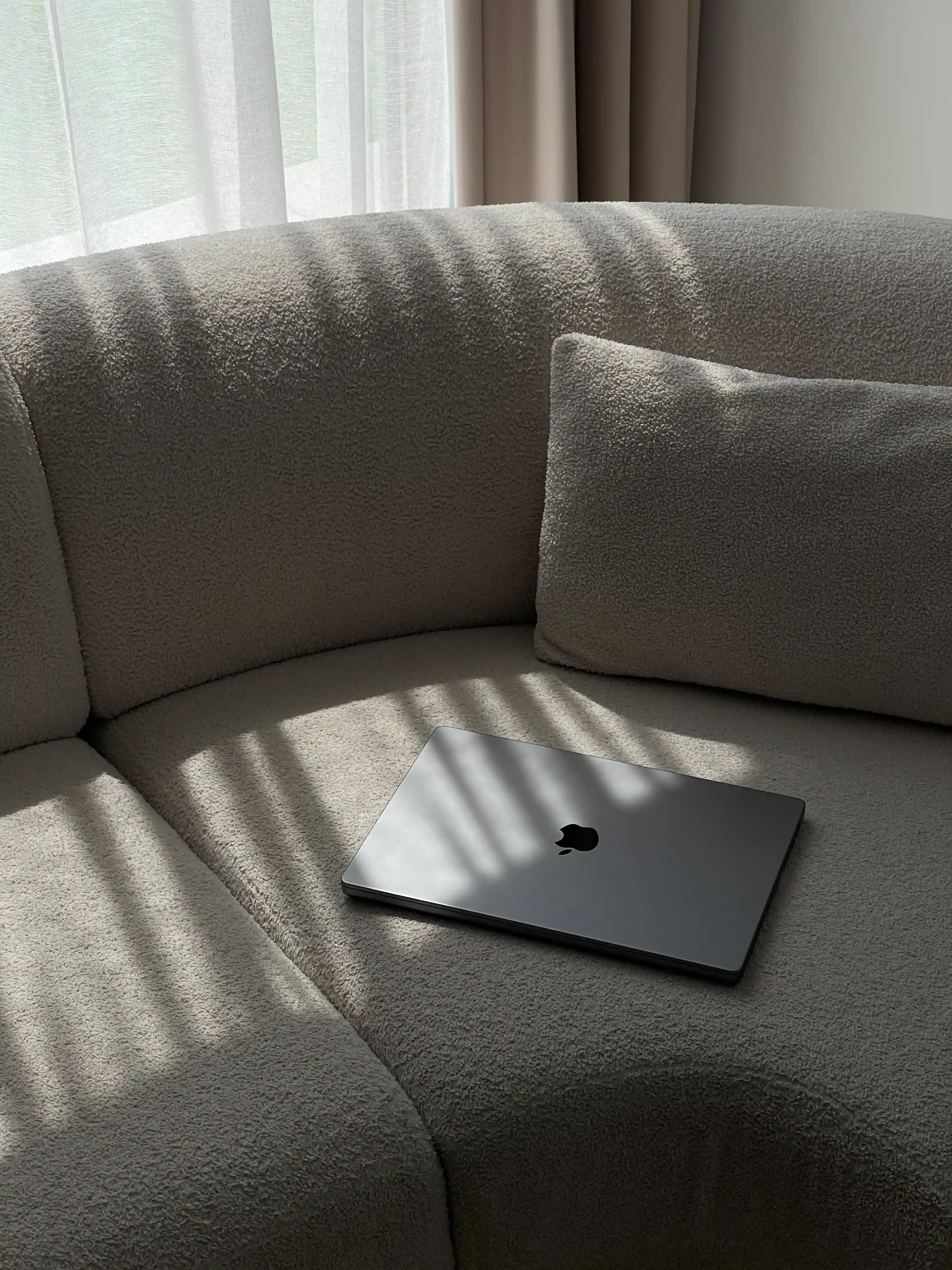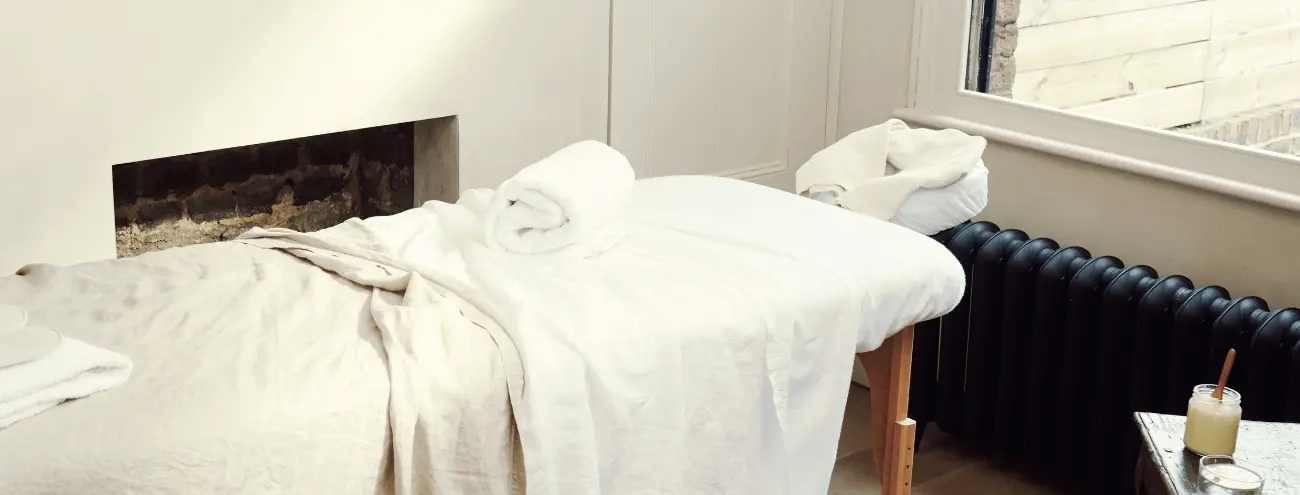Here’s what sitting at a desk all day is doing to your posture
About this post
Urban pro Sev talks all things posture – from her go-to daily stretches, to tips for improving your work setup.
Posted by
Emily from UrbanTags
- Wellbeing
- City life
- People
Book a treatment at home
Share
According to Unison, around 12 million workdays are lost every year due to back pain – with one in six adults in England suffering with it in some form.
To get an expert’s take, we sat down with Urban massage therapist Sev to talk about the daily damage desk work can do to your posture – and the simple steps you can take to help undo it.
With over 9 years’ experience helping clients release tension and move more freely, Sev takes a no-fuss approach to posture care. Forget fancy chairs or impossible yoga poses, all it takes is small changes that support your body long-term.
Posture isn't just physical – it impacts how you feel
"Posture affects every capacity of the body – mental, physical, emotional," says Sev. And for many of us, desk work is where the problems start.
"First of all, you’re collapsing. So you’re getting roundness in the back and the front of your body shortens,” she explains. “Your diaphragm is contracted, so you can’t breathe properly – that’s going to create anxiety.”
Your neck and shoulders also take a hit: “When it comes to posture, you're going to feel so much ache in the neck because the front of your body is short. Your neck can’t support the weight of the head.”
Three small things that make a difference
1. Counter-stretch at night
Before bed, Sev recommends undoing the day at your desk by lying back on the edge of your bed: “Open your chest, open your pecs, lean the head back, open the front of your throat. It creates a counterbalance to the forward stress position you’ve been in all day.”
2. Work in sneaky stretches throughout the day
“Even when you're standing in the bathroom or waiting for the kettle to boil, just roll your shoulders back, open your chest. No one can see – it all helps.”
3. The power of the breath
“I really love breathing. We were given it as a gift for free. It costs nothing,” Sev says. Learning to breathe diaphragmatically – into your belly instead of your chest – helps regulate your nervous system and bring calm.
“If you can control the breath, you can really regulate your nervous system and your parasympathetic system.”

Desk setup – it’s less about equipment, more about awareness
If you don’t have a high-end ergonomic chair to help your posture, don’t worry. According to Sev, it’s all about how you use what you have.
“If you keep a posture for too long, it cements. That's where stiffness and pain can come from. So get your screen at eye-level, sit a few pillows behind you and you’re ready to go.”
Using a basic chair or kitchen table? Try this:
Prop yourself up with a rolled towel or cushion behind your lower back
Raise your screen so it’s at eye level – use anything laying around, like books. This stops you hunching.
Face forward to avoid twisting your neck or spine if using multiple screens.
“Sit like a bride with your back propped up, almost like you’re perching. If you lean too far back, you risk compressing your spine. When you stand, channel a military officer – keep your chest open, neck back and create a strong posture,” she says.
Desk-friendly stretches
If you're feeling locked up after a long day, Sev’s go-to desk stretches are quick, effective and require zero equipment:
Side stretch reset
Cross one leg over the other
Raise the arm on the same side as the back leg
Lean away from that side, keeping your hips grounded
Feel the stretch across your ribs, side body and lower back
Breathe deeply – “so you don’t collapse the diaphragm,” Sev adds
Watch this stretch in action on Instagram – click here for the video.
Chest opener
Clasp your hands behind your back or hold a wrist
Pull your arms downwards and gently back
Engage your stomach, tuck your tailbone
Add a side-to-side sway if it feels good
“You're engaging your core, and this will open the back and chest. It's a nice rebound pose – it’s powerful,” Sev says.

Tension-relieving treatments
Massage isn’t a magic fix for your posture, but it can certainly help ease some of the tension sitting between your shoulders after a long day at your desk.
Deep tissue massage – great for stubborn knots
This firmer style targets the deeper layers of muscle and fascia – the connective tissue around your muscles. It’s great for releasing chronic knots in areas like the shoulders, upper back and neck that tighten from poor desk posture.
Sports massage – for even more pressure
Despite the name, sports massage is ideal if you spend long hours at a desk. It’s a targeted, technique-driven treatment that helps release muscle tension, improve mobility and prevent the stiffness that builds up from staying in one position too long. It’s especially effective for the neck, shoulders and lower back – common tight spots for desk workers.
Urban classic – for the best of both worlds
Our classic massage blends long, flowing strokes with light to moderate pressure, making it perfect if you want to unwind while still easing everyday tension. It’s a great option for general stress relief and improving circulation – ideal when your body’s been stuck in one position for most of the day.
Posture is a full-body experience
Desk posture doesn’t just live in your shoulders or spine – it’s connected to your breath, your nervous system and even your mood. That’s why Sev’s approach is about more than ‘sitting up straight’.
So, stay aware of how you’re sitting and moving, stretch when you can and and breathe – deeply, often and intentionally.
Need help letting go of your desk tension?
Book a massage with Sev or another trusted Urban therapist – straight to your home, on your schedule. Your back will thank you.
